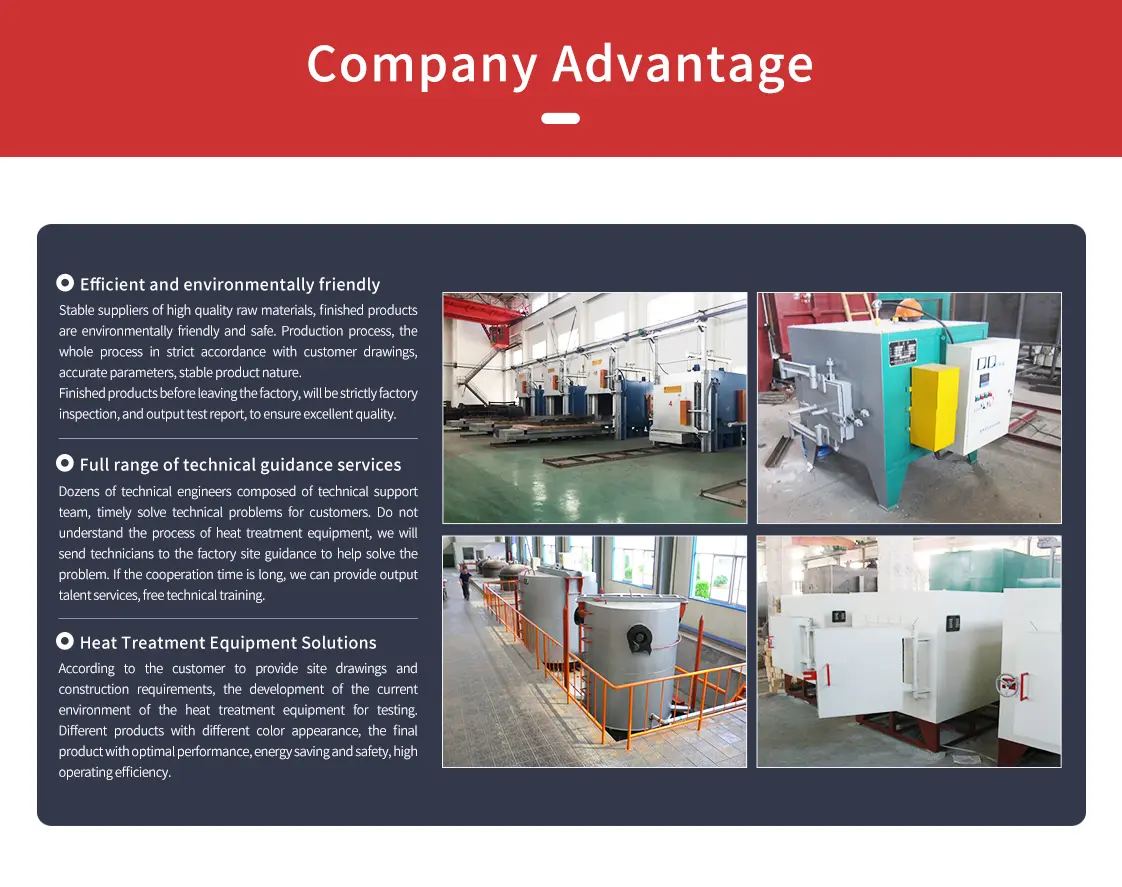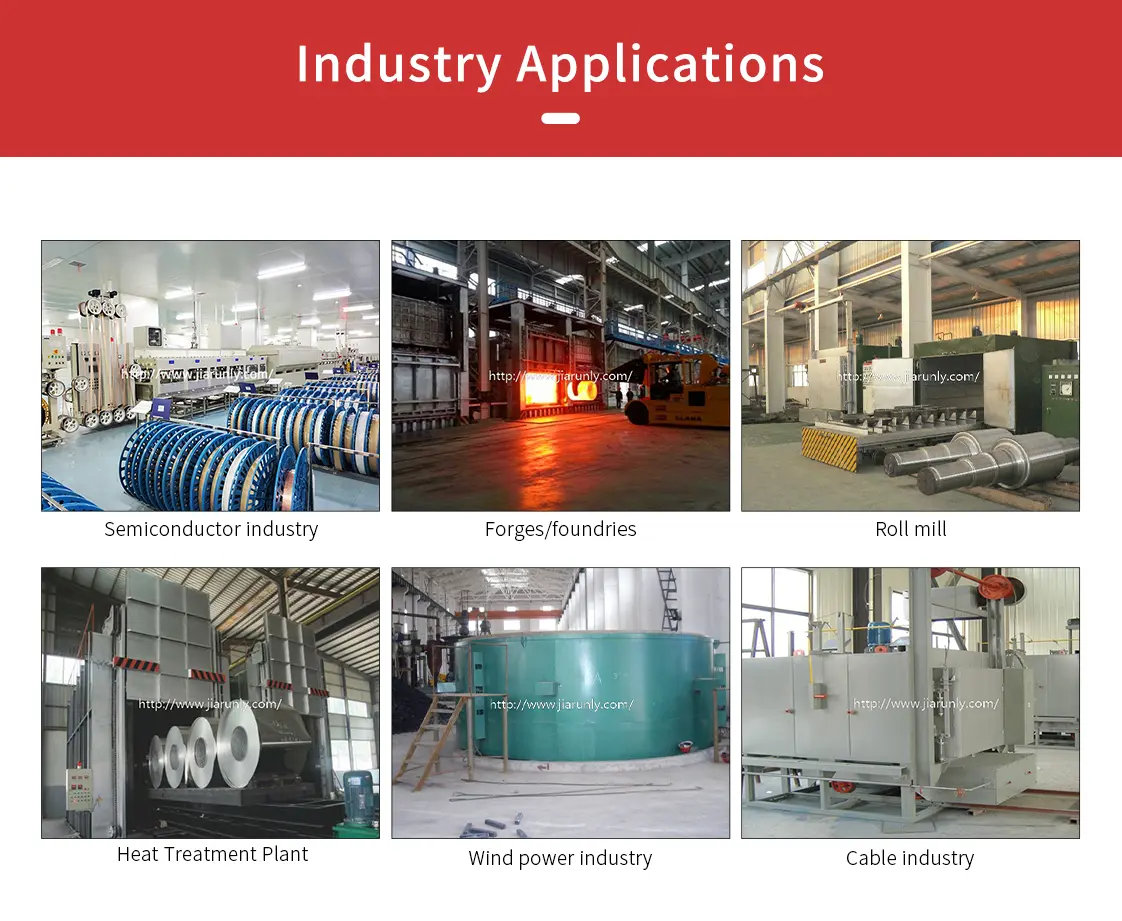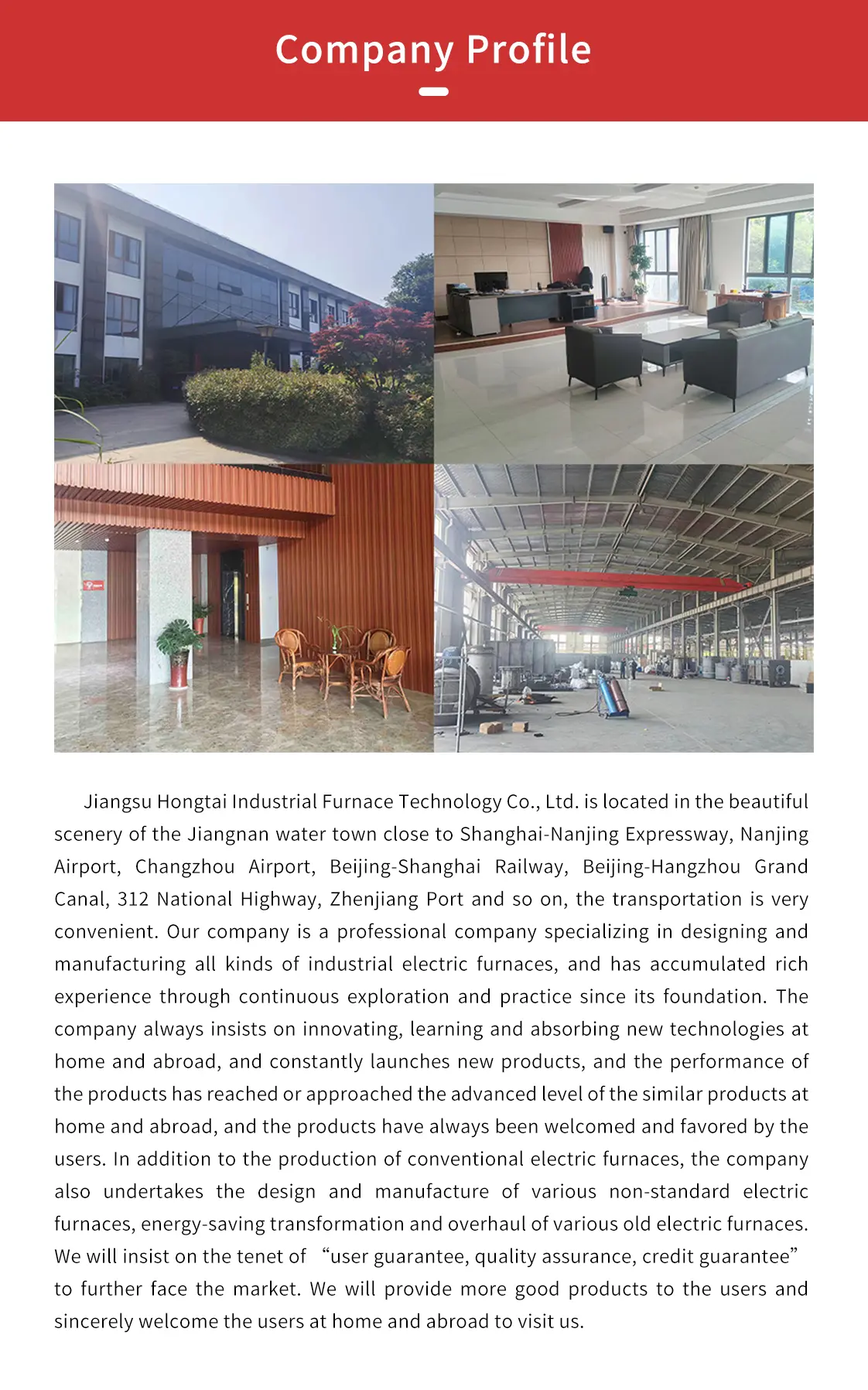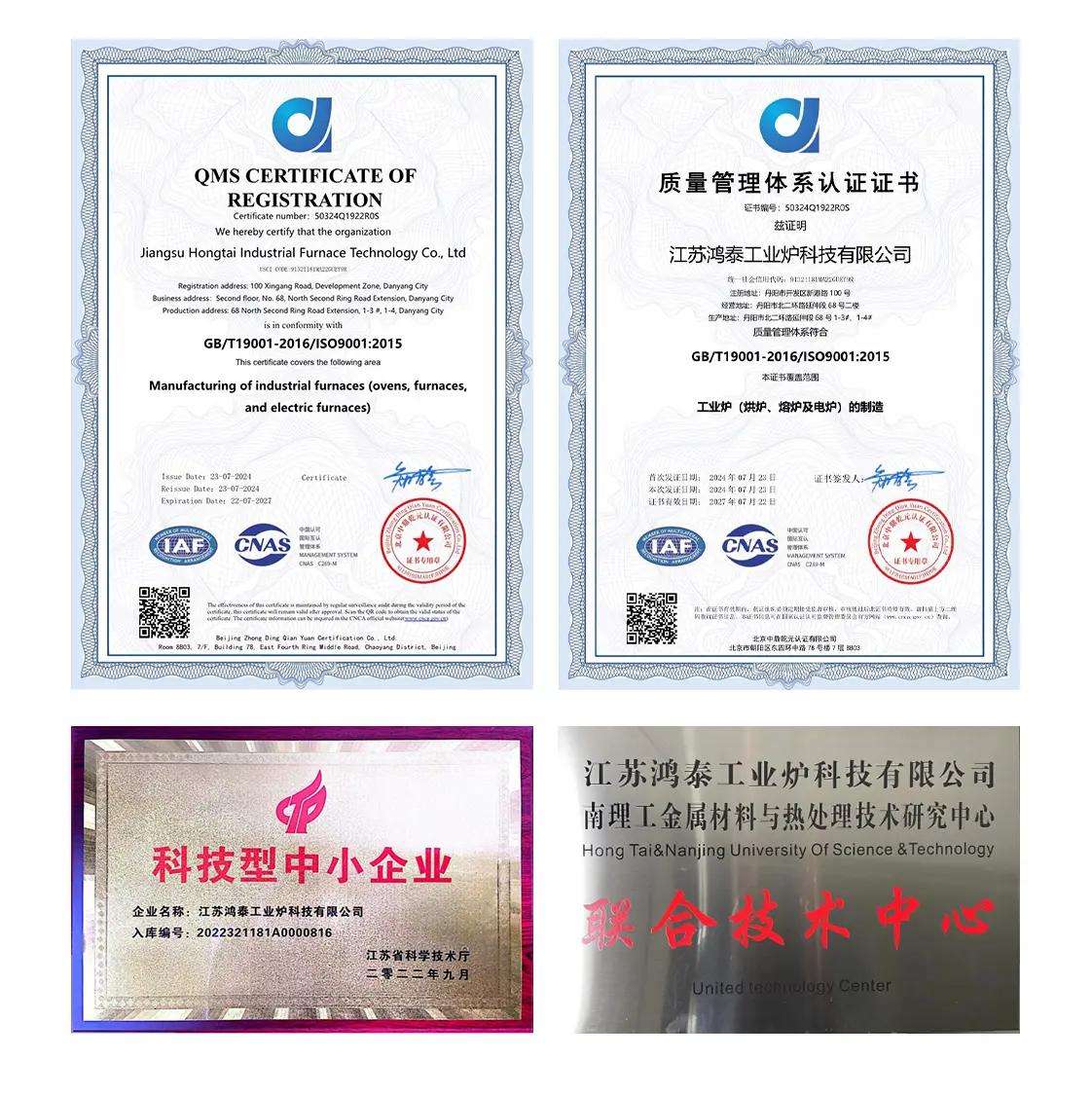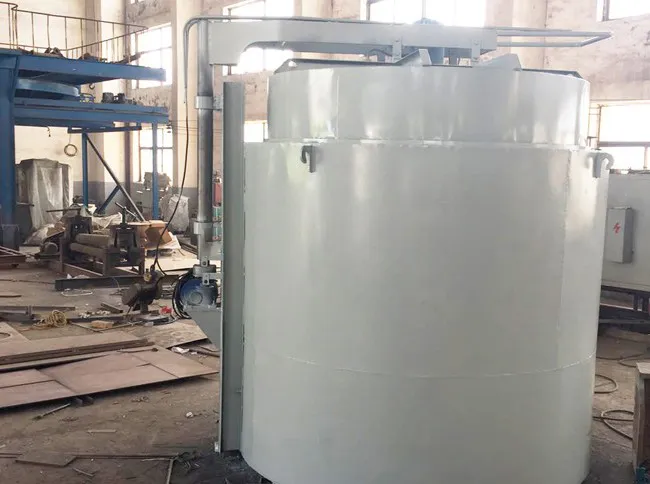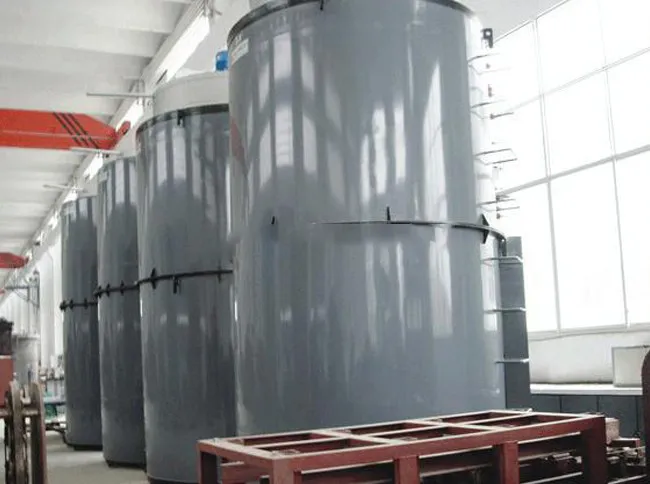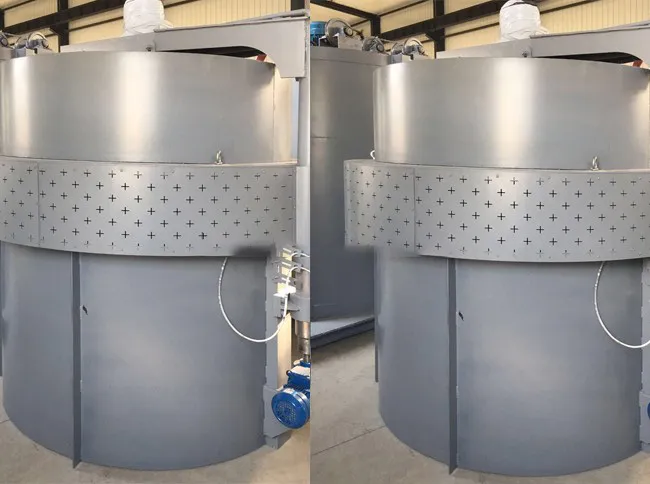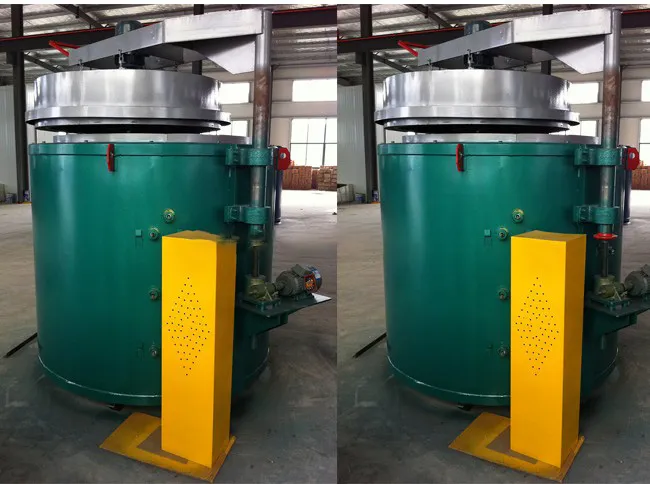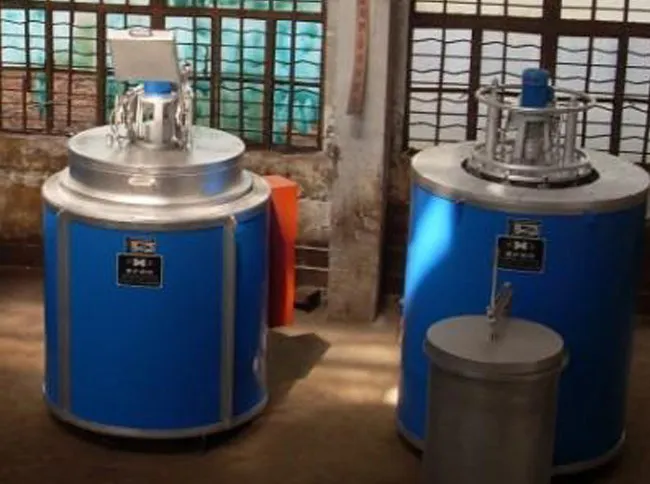- Vacuum furnace & oven
- Annealing Furnace & Oven
- Tempering furnace & oven
-
Carburizing furnace & Ovens
-
Bell Type Furnace
-
Pit Type Furnace & Well Type Furnace
-
Box Furnace & Chamber Furnace
-
Car Bottom Furnace & Bogie Hearth Furnace
-
Nitriding furnace & Ovens
-
Melting furnace & Ovens
- Quenching furnace & Ovens
-
Rapid quenching furnace & Ovens
- Forging furnace & Ovens
- Bright heat treatment furnace & Ovens
Pit-type tempering furnace & Ovens
Heat treatment furnace manufacturer,Jiangsu Hongtai Industrial Furnace Technology Co., Ltd
Pit-type tempering furnace is a type of steel and steel plate welding furnace, the main purpose for the general metal parts in the air for tempering.
Pit-type Tempering Furnace & Ovens
Vertical Tempering Solutions for Long and Cylindrical Components with Precision Control
Product Introduction
Our Pit-type Tempering Furnaces & Ovens are specialized industrial heat treatment systems designed for the precise tempering of long, cylindrical, or shaft-like metal components after hardening or quenching. Tempering is a crucial heat treatment process that reduces the brittleness of hardened steel, increases its toughness and ductility, and relieves internal stresses, while still maintaining sufficient hardness. These vertical furnaces are ideal for parts that require uniform tempering along their entire length to prevent distortion and achieve optimal metallurgical properties. They are commonly used for components that need to be suspended vertically during heat treatment. We offer solutions with excellent temperature uniformity, often achieved through forced air circulation, ensuring consistent and predictable material properties for critical long components.
Core Advantages for Vertical Tempering
- Ideal for Long Components: Vertical design is perfect for tempering long shafts, rods, tubes, and other cylindrical parts, ensuring uniform heat treatment along their length.
- Minimized Distortion: Vertical suspension during heating helps to reduce gravitational sag and minimize distortion, especially for slender components.
- Precise Temperature Control: Advanced systems allow for accurate regulation of tempering temperatures, critical for achieving desired metallurgical properties and preventing defects.
- Excellent Temperature Uniformity: Optimized forced air circulation systems ensure uniform heat distribution throughout the vertically suspended workpiece, leading to consistent hardness and toughness.
- Space-Efficient Footprint: Vertical design saves floor space, making them suitable for facilities with limited horizontal area.
- Stress Relieving: Effectively relieves internal stresses induced during hardening or machining, preventing cracking and improving dimensional stability.
- Automated & Safe Operation: Integrated PLC control with comprehensive safety interlocks, real-time monitoring, and data logging for reliable and secure operation.
Technical Specifications
| Parameter | Unit | Range/Value | Notes |
|---|---|---|---|
| Maximum Working Temperature | °C | 150 - 750 | Typical tempering temperature range |
| Heating Method | - | Electric, Gas-fired | Selectable based on energy source availability |
| Atmosphere Control | - | Air, Inert Gas (N2, Ar) | For bright tempering or to prevent oxidation |
| Rated Power/Fuel Consumption | KW / m³/h | Varies | Efficient heating systems |
| Working Chamber (Dia. × Depth) | mm | Customizable | Designed for long and cylindrical components |
| Temperature Uniformity | °C | ±3 (typical) | Ensures consistent tempering results |
| Control Accuracy | °C | ±1 | Advanced PID control |
| Circulation Method | - | Forced Air Circulation | Ensures excellent temperature uniformity |
| Control System | - | PLC + Touchscreen HMI | Advanced automation and data logging |
| Safety Features | - | Over-temperature protection, Emergency shutdown | Ensures safe operation |
Working Principle
Pit-type tempering furnaces are characterized by their vertical design, where the heating chamber is located below floor level. This configuration is particularly advantageous for heat treating long, slender components like shafts, rods, and tubes, as it allows them to be suspended vertically, minimizing distortion due to gravity during heating. Tempering is a heat treatment process applied to ferrous alloys, most commonly steel, after they have been hardened by quenching. The primary purpose of tempering is to reduce the brittleness of the hardened material, increase its toughness and ductility, and relieve internal stresses, while still retaining a significant portion of the hardness achieved during quenching.
The process begins with loading components into the furnace, typically using an overhead crane or hoist, which lowers them into the heating chamber. Once loaded, the furnace heats the components to a specific temperature below their lower critical temperature (typically between 150°C and 750°C) and holds them at that temperature for a specific duration. To ensure excellent temperature uniformity, which is crucial for consistent tempering results, these furnaces are typically equipped with powerful forced air circulation fans. These fans circulate the heated air throughout the vertical chamber, ensuring that all parts of the load receive uniform heat treatment. This convective heat transfer is highly efficient and effective for achieving precise temperature control.
During the soaking period at the tempering temperature, the unstable martensitic structure formed during quenching transforms into a more stable and tougher microstructure. After the soaking period, components are typically cooled in air or a controlled atmosphere. The entire operation, including heating and cooling, is precisely controlled by advanced PLC systems, which monitor and regulate temperature and time. This ensures repeatable and high-quality results, making pit-type tempering furnaces indispensable for industries requiring precision heat treatment of elongated components.
Process Flow
Loading Components
Long components are vertically loaded into the pit-type furnace using an overhead crane.
Heating to Tempering Temperature
Components are heated uniformly to the precise tempering temperature in the vertical chamber.
Soaking Period
Components are held at the tempering temperature for a specified duration for microstructural transformation and stress relief.
Controlled Cooling & Unloading
Components are cooled in a controlled manner (often in air) and then unloaded for further processing.
Solving Customer Pain Points
Minimizing Distortion in Long & Slender Parts
Vertical suspension during heating significantly reduces gravitational sag and thermal stresses, minimizing distortion and warping in long shafts and cylindrical components during tempering.
Ensuring Uniform Tempering Along Component Length
Optimized vertical forced air circulation ensures consistent heat distribution along the entire length of elongated parts, leading to uniform hardness, toughness, and stress relief.
Space Constraints in Production Facilities
The pit-type design utilizes vertical space, offering a compact footprint compared to horizontal furnaces, making it ideal for facilities with limited floor area.
Achieving Optimal Mechanical Properties for Critical Parts
Precise control over tempering temperatures and uniform heating ensures the desired microstructure formation, leading to optimal hardness, strength, and toughness for critical long components.
Safe & Efficient Handling of Heavy Long Components
The vertical loading and unloading system, often with overhead cranes, provides a safe and efficient method for handling heavy and long components, reducing manual labor and risks.
Versatility for Diverse Materials & Tempering Needs
Our furnaces are suitable for tempering a wide range of steel alloys and other metals, providing the flexibility needed for diverse industrial applications requiring vertical tempering.
Customer Success Stories
A manufacturer of large industrial shafts reported a significant improvement in the toughness and fatigue life of their products after implementing our pit-type tempering furnace, attributing the improvement to superior temperature uniformity and stress relief.
Customized Services
We offer comprehensive customization services for our pit-type tempering furnaces, including tailored chamber dimensions (diameter and depth), specific heating methods (electric or gas), and integration with existing material handling systems. Our engineering team works closely with clients to design solutions that precisely meet their unique component lengths, diameters, desired mechanical properties, and production throughput requirements, ensuring optimal performance and seamless integration into their heat treatment processes.
Related Keywords
pit type tempering furnace, vertical tempering oven, long component tempering, cylindrical parts tempering, shaft tempering, heat treatment tempering, stress relieving, precision heat treatment, metallurgical equipment, steel tempering, alloy tempering, vertical heat treatment, minimal distortion tempering
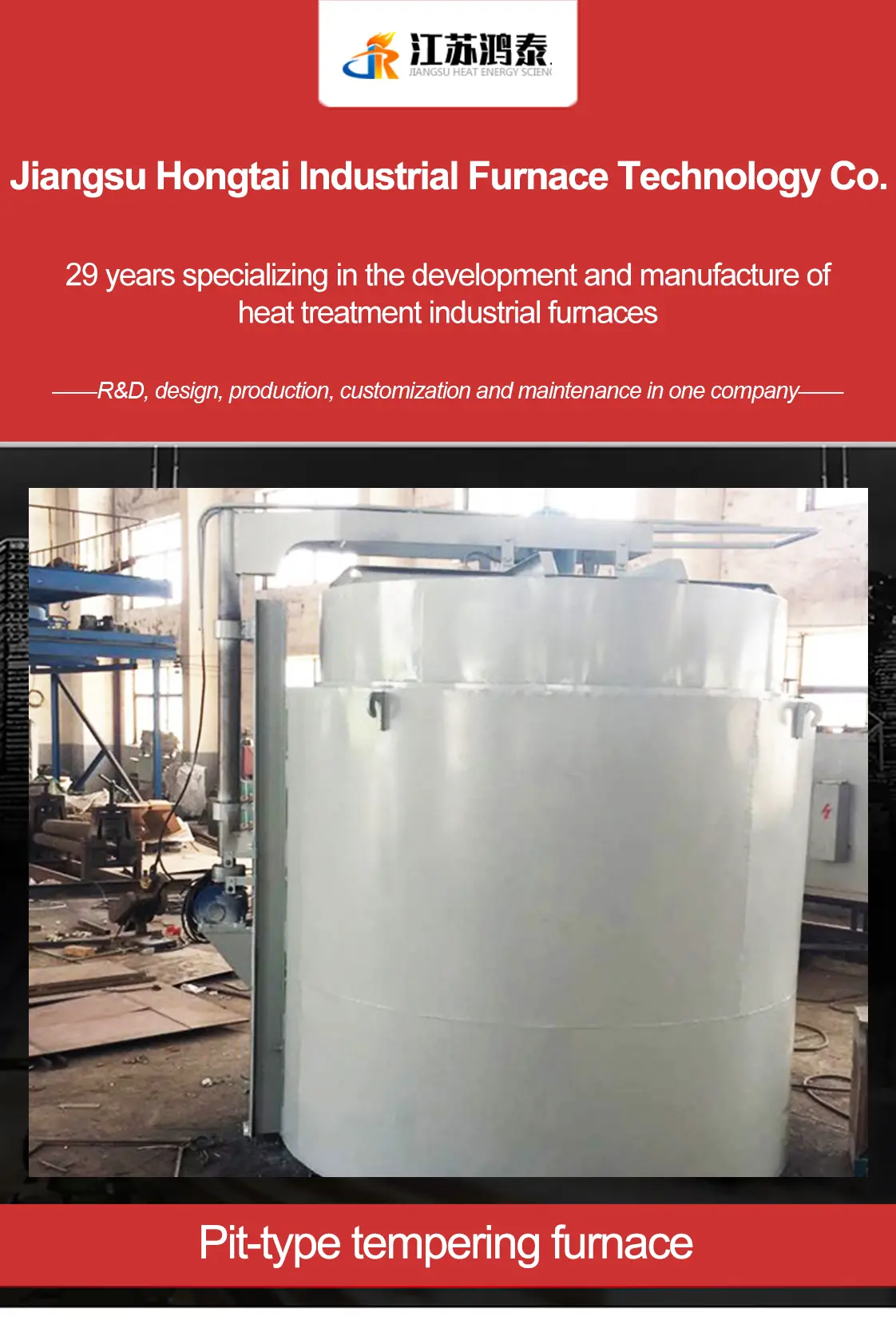
Industrial Value and Application Products
- Long Shafts and Cylinders: Tempering of components for heavy machinery, power generation, and hydraulic systems.
- Large Structural Beams: Stress relief and property adjustment for components used in construction and infrastructure.
- Drill Rods and Pipes: Tempering for oil and gas industry components requiring high toughness and fatigue resistance.
- Turbine Rotors: Critical components in power plants, benefiting from precise tempering to ensure long-term reliability.
- Large Dies and Molds: Tempering of large tooling to improve toughness and prevent cracking.
Introduction of Pit-type Tempering Furnace
Pit-type tempering furnace is a type of steel and steel plate welded into the furnace, the main purpose for general metal parts in the air for tempering and aluminum alloy die casting, piston, aluminum plate and other light alloy parts quenching, annealing, aging heat treatment.
Structure:
Pit-type tempering furnace structure, the shell is made of steel plate and steel made of cylindrical furnace body. The inner surface of the furnace cover is made of stainless steel plate. The lining of the furnace is made of energy-saving microporous refractory heat preservation bricks. Furnace lining and shell sandwich aluminum silicate fiber cotton insulation, gap filled with expanded insulation powder. Resistance wire using 0Cr25Al5 high-resistance alloy wire wound into a spiral installed in the furnace chamber on the shelving wire brick. Stainless steel charging basket is placed in the furnace chamber. The lid of the furnace is lifted and lowered by a manual lever. In order to make the workpiece uniform heating, installed in the furnace cover with heat-resistant stainless steel shaft and wind blade made of hot air circulation fan, the workpiece in the heating process, the hot air in the tempering furnace up and down circulation to ensure uniform heating of the workpiece. In order to ensure that the operation of the lifting mechanism near the installation of limit switches, this switch and tempering furnace control cabinet power interlock, the furnace cover is closed (when working) on the power supply. When the furnace cover is opened, the limit switch cuts off the control power supply, so the power supply of the heating element is cut off at the same time to ensure the operation. Pit-type tempering furnace factory supporting automatic temperature control cabinet, thermocouple.
Use:
Pit-type tempering furnace is an energy-saving cycle operation type tempering furnace for use in long shafts, connecting rods, rigging and other suspended heating type workpieces and general metal parts in the air for tempering, but also for aluminum alloy die castings, pistons, aluminum plates and other light alloy parts quenching, annealing, aging heat treatment.
Main technical parameters:
1, loading capacity: 15000kg (including workpiece)
2、Effective loading size: center 2800×1600mm
3、Effective heating area height: 2400mm
4、Effective heating area temperature uniformity: ± 3 ° ° C
5、Control accuracy:±1℃
6、Temperature rise of furnace shell:50℃
7、Number of zones:3 zones
